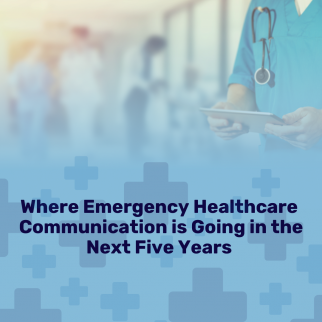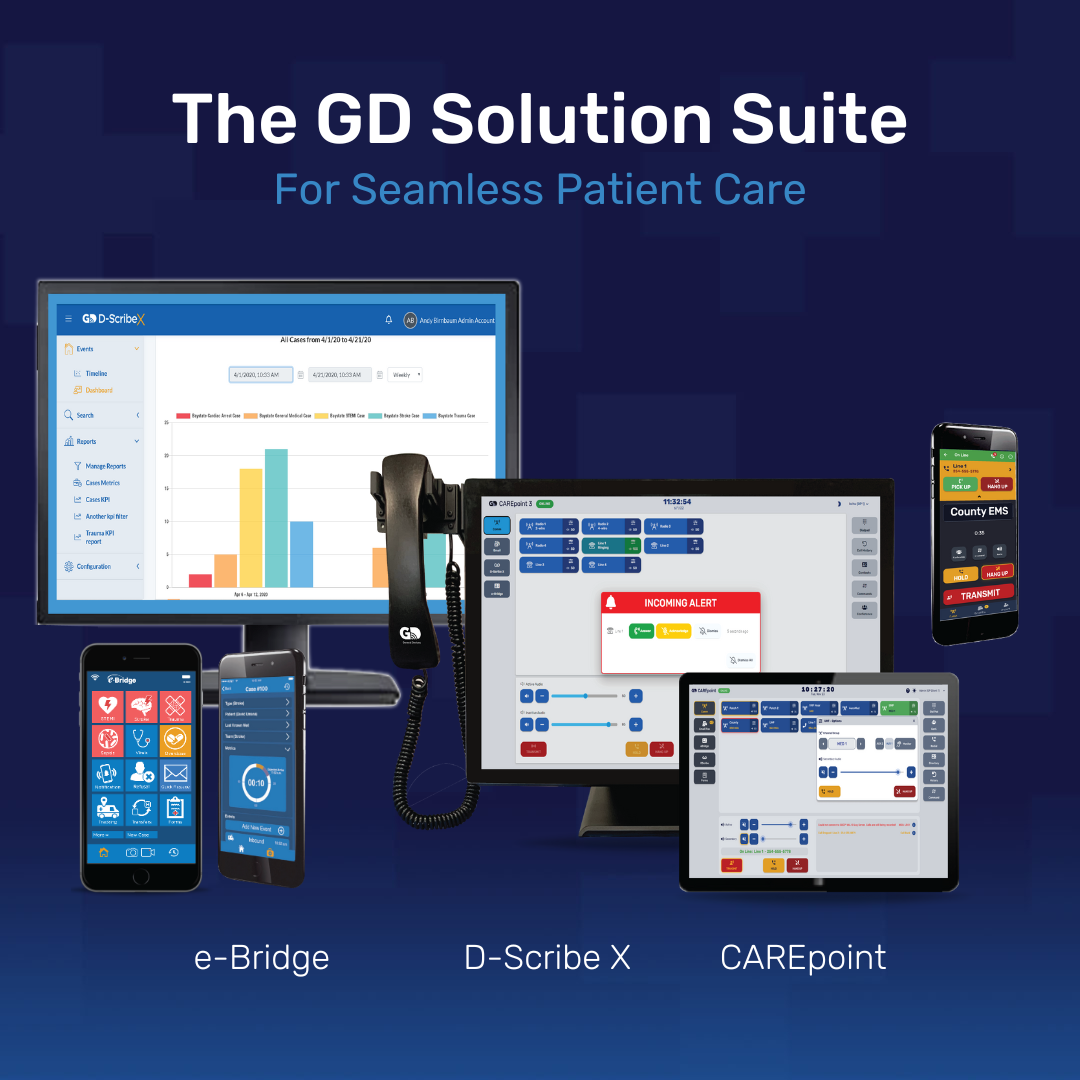RIDGEFIELD PARK, N.J. - Oct. 15, 2024 - PRLog -- Efficient, effective communication is a major key to improving emergency healthcare. Within the next five years, trends like mobile health solutions, cloud computing, and artificial intelligence will be incorporated into more technologies, giving EMS crews and hospital staff the tools they need to provide better patient care.
It's important to know where emergency healthcare communication is going so you can quickly adapt.
Why Is EMS-ED Communication Important?
Since the advent of the COVID-19 pandemic, we've seen broader access to solutions like telemedicine and other remote-friendly communication platforms, equipping emergency healthcare providers with improved communication and decision making support to improve patient care.
Today, EMS and hospitals are focusing on integrated care models as a way to offer more comprehensive care. Emergency healthcare systems are also prioritizing public health preparedness by ensuring they have the tools and systems in place to help manage far-reaching events such as natural disasters or mass casualty incidents.
And of course, communication platforms continue to improve, too, helping with coordination and patient outcomes in emergency situations.
Emergency Healthcare Communication: 5 Important Advancements to Know
#1. Integration of Advanced Technologies
As newer technologies such as artificial intelligence continue to be refined, AI and machine learning will begin to play a bigger role in hospital communications. They can enhance data analysis, predictive analysis, and decision-making support in emergency healthcare settings.
For example, an emergency department might use predictive analytics and AI to improve triage protocols. As a result, the department's decision-making and patient flow will improve.
Other advanced technologies allow for telemedicine and remote monitoring, improving accessibility and response times. This is particularly beneficial for small hospitals or hospitals in remote, rural areas, allowing providers to connect with larger hospitals for consultation where needed.
The rollout of 5G networks and the Internet of Things (IoT) will also enable faster, more reliable data transfer. 5G networks can transfer data up to 10 times faster than 4G networks. For EMS communication, efficient data transfer is crucial to treating patients promptly and correctly.
#2. Enhanced Interoperability and Data Sharing
To achieve the best patient outcomes, your communication systems need to work together. Looking ahead to what's next in hospital communication, more platforms are being developed that are unified — integrating EMS, hospitals, and other healthcare providers for seamless data exchange and real-time communication. Using standardized data formats facilitates easier sharing across different systems.
As data sharing becomes more efficient, with the IoT enabling huge amounts of information to be transferred in seconds, data security also becomes more of a concern. Your hospital will need to incorporate robust cybersecurity measures to protect sensitive patient information. The General Devices Solution Suite is secure and reliable, prioritizing compliance with healthcare regulations.
#3. Mobile Health Solutions
EMS crews and hospital staff are beginning to more commonly adopt mobile applications, giving them real-time access to patient data, protocols, and communication tools. As mobile tools and reporting systems continue to improve, EMS teams will be able to capture comprehensive patient information on-scene and transmit this information before arrival at the hospital.
#4. The Role of Cloud Computing
Cloud-based systems are more scalable and accessible. By using cloud computing to store patient data, you expand access, ensuring every crew member or provider can get to the information they need from wherever they are.
Cloud solutions support continuity of care during large-scale incidents such as disaster recovery efforts. If your workforce is distributed, they can still communicate efficiently. And cloud-based solutions are more reliable for less disruptions.
#5. Training and Education
Continuous education is a valuable way to keep healthcare professionals up-to-date on the latest communication technologies and protocols.
Virtual reality (VR) can be used to train EMS and hospital staff, enhancing preparedness and response skills. A virtual environment provides staff with the opportunity to physically interact and engage with a theoretical situation rather than passively listening to a lecture or reading a textbook. This leads to improved retention.
Future-Proof Your Emergency Healthcare Communication
Future-proof your emergency healthcare communication by scheduling a demonstration of the GD Solution Suite.
About GD (General Devices)
GD is a Healthtech company specializing in communication solutions that help EMS and hospitals deliver simply seamless patient care. Powered by responsive innovation, GD's user-friendly solutions facilitate rapid, secure, voice, telehealth and data sharing communications across care teams to help save time, money and lives. Backed by a 40+ year history and thousands of implementations, GD is an experienced industry leader. Visit https://general-devices.com/ to learn more.
Photos: (Click photo to enlarge)



Source: General Devices
Read Full Story - Where Emergency Healthcare Communication is Going in the Next 5 Years | More news from this source
Press release distribution by PRLog













